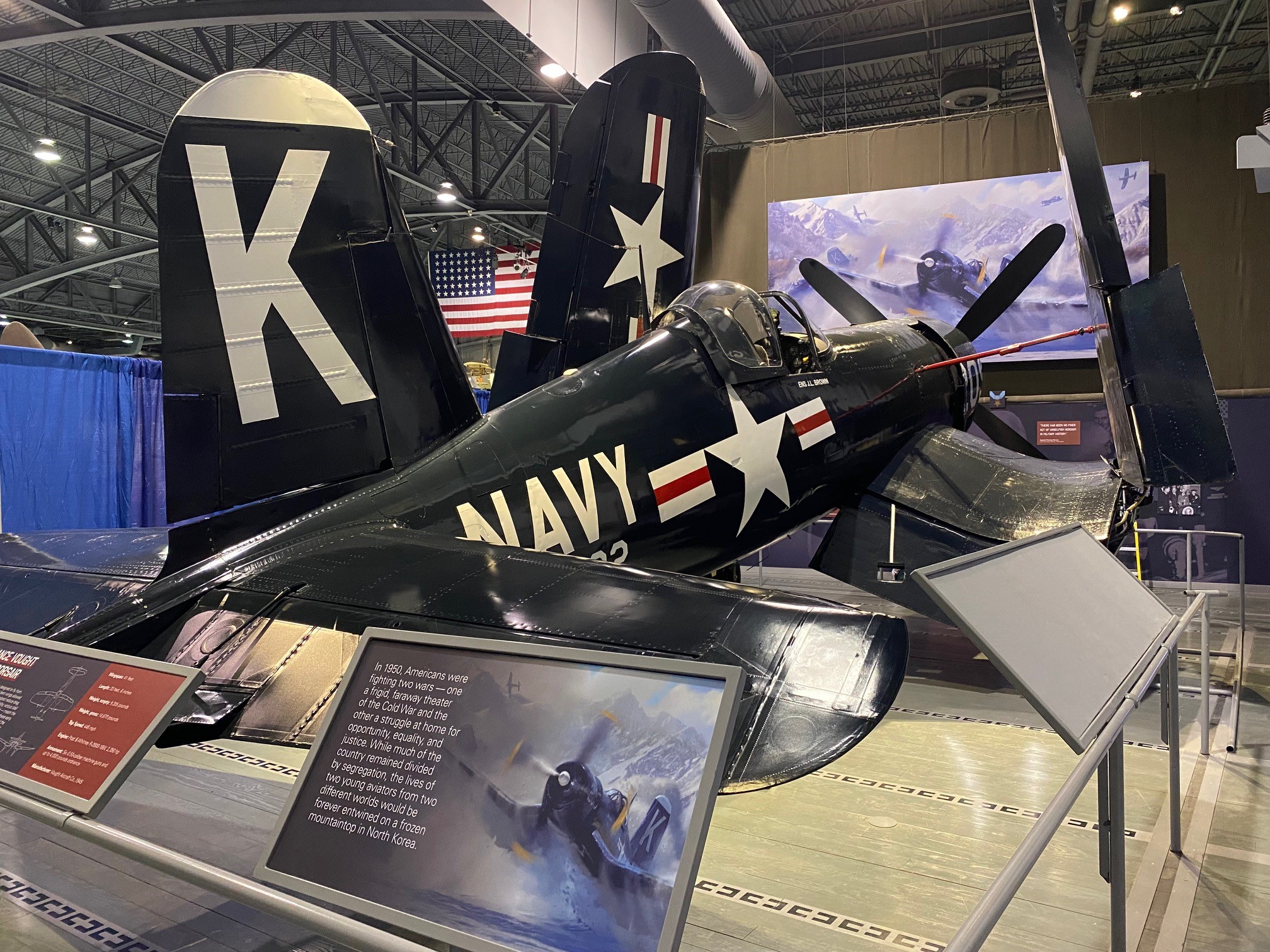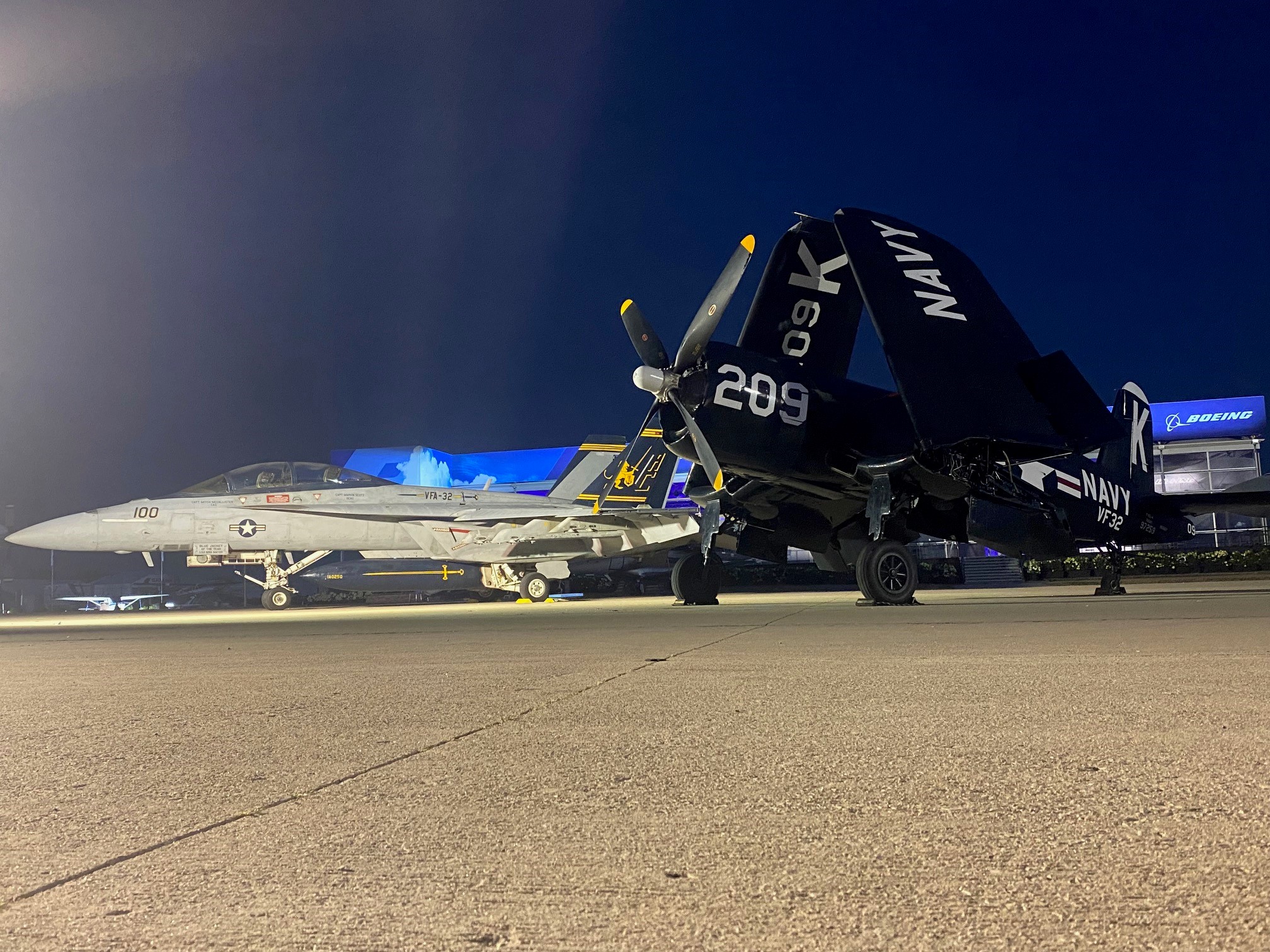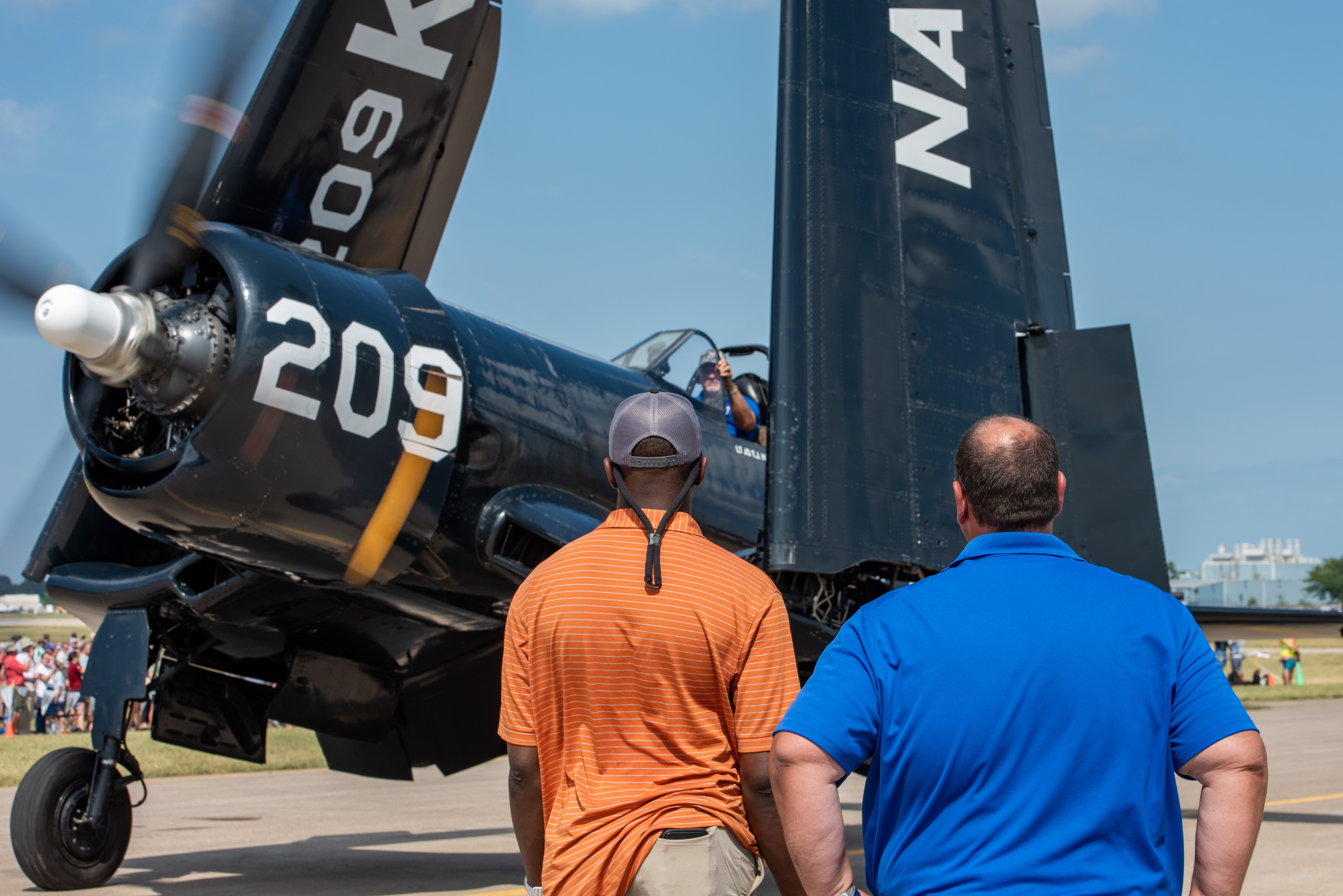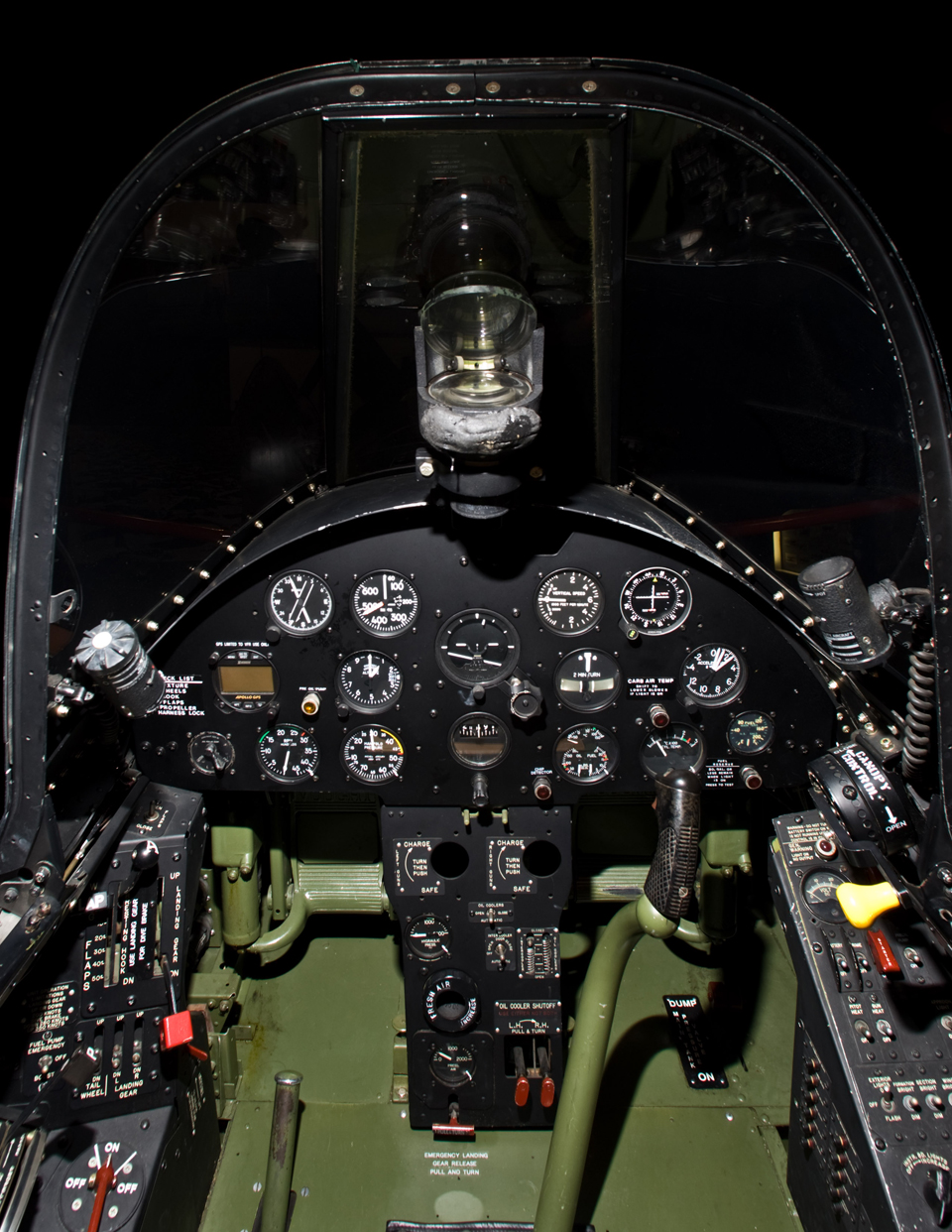1945 Chance-Vought F4U-4 Corsair
Location: Eagle Hangar
The EAA Aviation Museum’s F4U-4, built in 1945, spent the first part of its military career in mothballs. Accepted by the U.S. Navy in October 1945, this Corsair went straight into storage until 1949. It was used as a trainer at several naval air stations between 1949 and 1951. It was then assigned as a replacement airplane to VF-32 on the USS Leyte. It replaced one of the aircraft lost on December 4, 1950, when Tom Hudner crash-landed his airplane behind enemy lines in an attempt to save his wingman, Jesse Brown. EAA’s Corsair then disappeared from Navy records until 1966, when it was sold to a private owner. It was used as a show plane and racer until 1974, then not flown again until 1982 when it was donated and flown to the EAA Museum. EAA spent 12 years restoring this aircraft, unveiling it in May 1994. It is now on permanent display in the museum’s Eagle Hangar.
Its markings are those of a Corsair flown by the men of VF-32. Medal of Honor recipient Tom Hudner is among the pilots who flew this aircraft in “Fighting 32.”
Corsair History
The gull-winged F4U-4 Corsair was one of the finest fighter-bomber aircraft produced during World War II. It stood at the summit of piston-engine fighter technology and development, and it was a formidable weapon from the closing months of WWII through the Korean War. Though the first F4U-4s only reached frontline units in early 1944, they compiled an impressive combat record against Japanese air, land, and sea forces. In Korea, the Corsair was outclassed as a fighter (though it shot down at least one Chinese MiG-15 jet fighter), and it was used mostly as a ground-attack fighter/bomber. Its speed and ruggedness, and its huge bomb load capacity (rivaled only by late-model P-47s) made it very effective in the ground-attack role.
As successful as the Corsair became, its beginnings were unpromising. In 1938, the U.S. Navy called for designs for a new single-seat, carrier-based fighter. The Chance-Vought Corporation won the contract with a unique gull-wing design powered by the largest aircraft engine then available — the 2,000-hp Pratt & Whitney R-2800-8 Double Wasp radial piston engine. The gull-wing design was necessary to provide adequate ground clearance for the airplane’s huge three-bladed propeller. The gull wing also proved to be a low-drag design and, because it put the folding wings’ hinge points closer to the deck, the design gave the Corsair a lower profile in an aircraft carrier’s cramped hangar deck.
The Corsair prototype first flew in May 1940 but, citing landing gear problems and poor visibility over the nose, the Navy decided the Corsair was not suitable for carrier duties. Even after modifications solved these problems, the Navy was still slow to adopt the Corsair. But the Marines embraced it, making it one of their principal fighters/bombers. The Navy gradually realized its value as an outstanding carrier-based aircraft, rivaled only by the Grumman F6F Hellcat. By late 1944, Chance-Vought was building 300 Corsairs a month — one every 82 minutes.
The F4U-4 version appeared in 1943 with an upgraded P&W R2800-18W engine (2,450 hp) and a new Hamilton Standard four-blade hydromatic propeller. Corsair production ended in 1952, with 12,571 built.
Many people know the Corsair as the airplane flown by Maj. Greg “Pappy” Boyington and his “Black Sheep Squadron” (VMF-214). Boyington’s “Black Sheep” shot down more than 90 enemy aircraft. The squadron included nine aces in its ranks. Corsairs were flown by the U.S. Navy and Marines, the British Royal Navy's Fleet Air Arm, the Royal New Zealand Air Force, and the French Aéronavale.
Corsair Performance
The Corsair had strong virtues that made it a dangerous opponent. Its speed (especially at high altitudes), roll rate, climb rate, and maneuverability were comparable to the best fighters of the day — the P-51 Mustang, P-38 Lightning, and Japanese Zero. It handled well at slow speeds and in stalls. While it could not out-turn a Japanese Zero, its superior speed and rate of climb gave it the advantage when used with the right tactics. The Corsair’s 1,000-mile range was roughly the same as the long-range Republic P-47, but still much shorter than a P-51’s combat radius.
The aircraft’s six .50-caliber machine guns or four 20-mm cannons (F4U-4B & -4C) gave it more-than-adequate firepower, and it could take off with a heavier bomb load than some of the medium twin-engine bombers of the era. A Corsair could endure an incredible amount of punishment — rivaling the tank-like P-47 Thunderbolt, as even the Army Air Forces admitted.
One “vice” plagued the Corsair throughout its production run. At low speeds, the huge R-2800 engine produced huge amounts of torque. If an inexperienced pilot jammed the throttle to the firewall on takeoff, the torque could easily twist the airplane onto its back and “ruin the pilot’s afternoon.” This tendency earned the Corsair the nickname “Ensign Eliminator.” Experienced pilots said the F4U was no more challenging to fly than any other high-performance fighter then in service.








